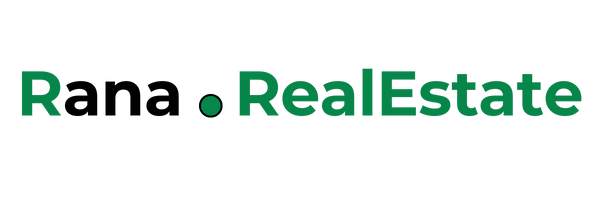How to Analyze a Rental Property Like a Pro
Buying a rental property can be one of the best ways to build long-term wealth — but only if you buy the right one. Not every home makes a good rental, and not every cheap property is a smart investment.
So how do you know if a property is a good deal? You don’t need to be a math genius or a real estate expert to figure it out. With a few key steps and some basic numbers, you can learn how to analyze a rental property like a pro.
This guide will walk you through the process using simple words and real examples.
Step 1: Understand the Basics
Before we start crunching numbers, let’s go over a few important terms:
- Rental income: Money you get each month from tenants.
- Expenses: All the costs that come with owning the property (like taxes, insurance, maintenance).
- Cash flow: What’s left after you pay the expenses. This is your profit.
- Cap rate: A quick way to measure how much return you’ll get from the property.
- Cash-on-cash return: How much money you make compared to the cash you invested.
Knowing these terms will help you understand whether a rental is a good or bad investment.
Step 2: Estimate Monthly Rental Income
Start by finding out how much rent the property can make each month. You can:
- Check local listings on Zillow, Apartments.com, or Craigslist
- Ask a local property manager
- Use Rentometer.com for rent comparisons
For example, if similar homes in the neighborhood rent for $2,000 per month, that’s a good starting point.
Tip: Be realistic. If the home is older or needs work, your rent might be lower.
Step 3: Add Up Your Monthly Expenses
Owning a rental comes with costs. You’ll need to estimate the monthly expenses. Common ones include:
- Mortgage payment (principal + interest)
- Property taxes
- Insurance
- Repairs and maintenance (budget 5–10% of rent)
- Vacancy (expect 1 month per year without a tenant)
- Property management (if you hire someone, usually 8–10% of rent)
- HOA fees (if it’s in a community with a homeowner’s association)
Let’s look at an example. Say you’re buying a property for $300,000 and putting 20% down. Your mortgage is about $1,300/month. Add:
- Taxes: $250
- Insurance: $100
- Maintenance (10%): $200
- Vacancy (1 month a year = $2,000/12): $167
- Property management (8% of $2,000): $160
Total monthly expenses = $2,177
Step 4: Calculate Cash Flow
Now subtract the expenses from the income:
- Rent: $2,000
- Expenses: $2,177
Cash flow = -$177/month
In this case, you’re losing money every month. That’s not a great deal unless the home is expected to grow a lot in value.
Let’s try another:
- Rent: $2,500
- Expenses: $2,100
Cash flow = $400/month
That’s better — you’re making a profit every month.
Step 5: Look at the Cap Rate
The cap rate (short for capitalization rate) shows how much return you’re getting compared to the price of the property.
Here’s the formula:
Cap Rate = (Net Operating Income ÷ Property Price) × 100
Net Operating Income (NOI) = Annual rent – expenses (without the mortgage)
Example:
- Annual rent: $2,500 × 12 = $30,000
- Annual expenses (excluding mortgage): $800/month × 12 = $9,600
- NOI = $30,000 – $9,600 = $20,400
- Price = $300,000
Cap rate = ($20,400 ÷ $300,000) × 100 = 6.8%
A good cap rate depends on your market, but generally:
- 4%–6% = common in hot, expensive markets
- 7%–10% = better returns, found in less competitive areas
Step 6: Check Cash-on-Cash Return
This number tells you how much profit you’re getting for the money you actually invested (your down payment, not the whole price).
Cash-on-Cash Return = (Annual Cash Flow ÷ Total Cash Invested) × 100
Say you put 20% down on a $300,000 home = $60,000
You also spent $5,000 on closing costs = total investment = $65,000
Your annual cash flow = $400 × 12 = $4,800
Cash-on-cash return = ($4,800 ÷ $65,000) × 100 = 7.4%
That’s a solid return! Most investors aim for 8% or higher, but even 6–7% is decent depending on the location and market trends.
Step 7: Look at Appreciation Potential
Some properties grow in value more than others. A home in a growing neighborhood might increase by 3–5% a year. Over 10 years, that adds up.
While appreciation isn’t guaranteed, you can research:
- Job growth in the area
- School quality
- New businesses or developments nearby
- Past price trends
If your $300,000 home grows to $390,000 in 10 years, that’s $90,000 in added equity — even before you count rent income.
Step 8: Don’t Forget the Exit Plan
Before you buy, ask yourself:
- Will I hold this property long-term?
- Can I sell it easily if needed?
- Will I be okay during a market downturn?
A great investment should make money even if the market slows down or rent drops for a while.
Bonus Tips from Real Estate Pros
1. Run the numbers conservatively. Always assume expenses will be a little higher, and rent a little lower. That way you won’t be surprised.
2. Avoid emotional decisions. Don’t fall in love with the look of the property — focus on the numbers.
3. Compare multiple properties. Look at at least 3–5 deals before buying.
4. Talk to a local expert. Realtors, property managers, and lenders can give insight into rent rates and demand in the area.
5. Keep learning. Read books, follow real estate podcasts, and talk to other investors.
Final Thoughts
Analyzing a rental property may seem scary at first, but it’s really just a matter of understanding income and expenses. When you know how to calculate cash flow, cap rate, and cash-on-cash return, you’ll be able to make smart decisions with confidence.
Whether you’re buying your first rental or your fifth, remember: numbers don’t lie. Always follow the math, not your emotions.
With the right mindset and strategy, you can invest like a pro and build long-term wealth through rental properties.
Rana Real Estate Group is a trusted name in real estate, offering expert assistance for all your property needs. Whether you’re buying, selling, or investing, their experienced team provides tailored solutions and personalized service to help you achieve your goals. With a focus on integrity and transparency, they guide you through every step of the process, ensuring a smooth and successful transaction. Whether you’re a beginner or seasoned in real estate, Rana Real Estate Group is here to support you every step of the way.
Rana Khanjani, MBA
Specializing in Commercial, Residential, and Land

